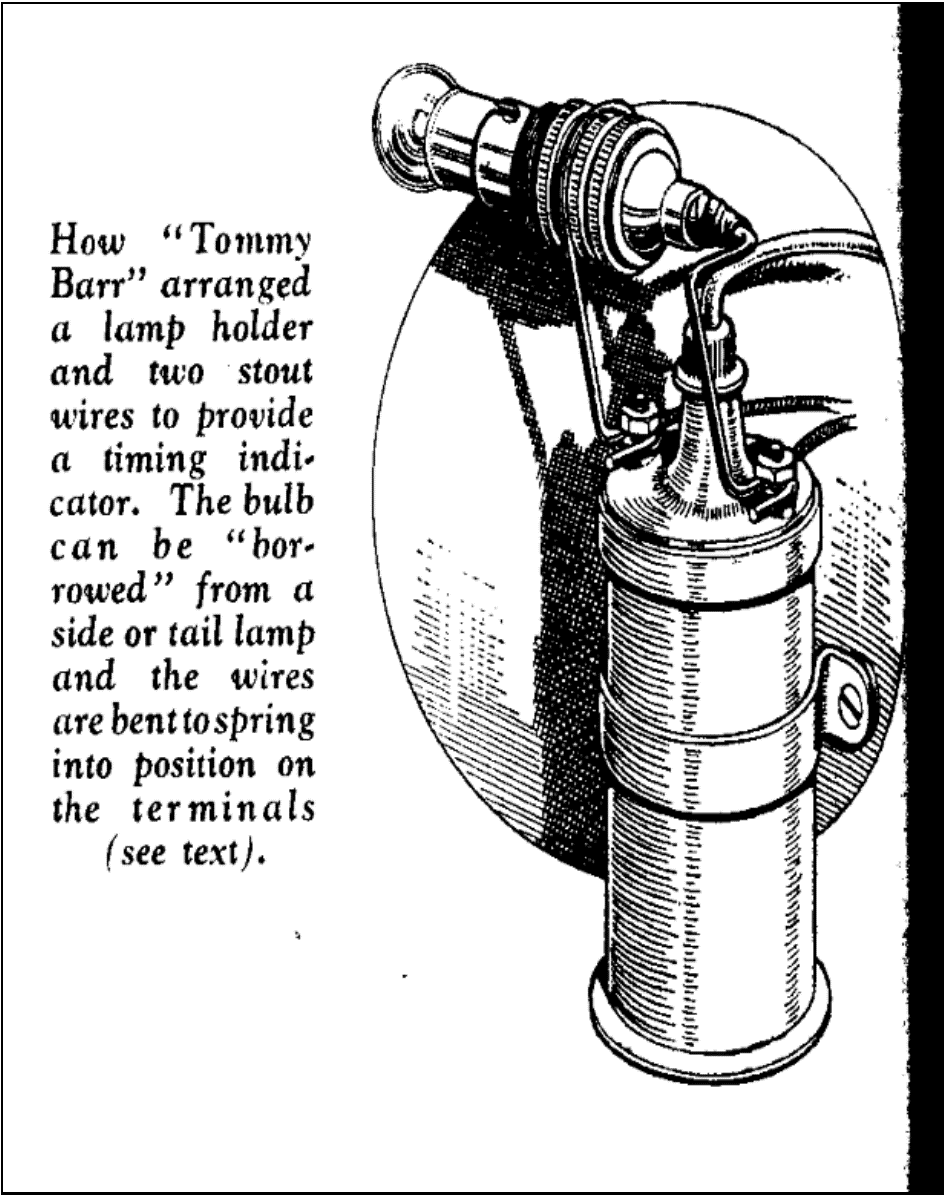
AUSTIN WORKSHOP SHEETS JANUARY 27, 1940.
TESTING THE COIL
On
the coil there are terminals usually marked CB and SW in Lucas sets.
These are connected to the contact breaker and to the switch
respectively. Even if they are not marked in this way they can be recognized by their obviously low-tension cables. The lamp bulb can be connected in two ways.
One
is to insert it in series with the coil. For that purpose the cable
from either of these two terminals must be disconnected and attached to
one terminal of a lamp holder or adaptor, obtainable at any
electricians or at some of the sixpenny stores. The other terminal of
the adaptor must be connected to the empty terminal of the coil.
In
this method there may be only a feeble glow from the lamp because its
resistance is added to that of the coil and therefore only a small
current will flow. However, the light will usually be quite discernible
and so soon as it disappears one knows that the contacts have separated.
By
an alternative method it is possible to obtain the same result, but
with a brighter light and without undoing a single terminal. In this
case the bulb is placed in parallel with the coil. That is to say, the
terminals of the lamp holder are connected to the two terminals on the
coil.
All
that one needs for that purpose are two short pieces of stiff wire,
attached one to each lamp terminal so that they can be "touched" on to
the two coil terminals while the engine is cranked gently round. To get
the exact point of ''break" the final movement of the crankshaft can be
made very conveniently by turning the fan pulley backwards or forwards.
A suitable bulb for use in this case as in the other can be taken from a sidelamp of the car. There is thus remarkably little expense in rigging up this useful apparatus. For those who may indulge frequently in ignition-timing experiments, it is well worth having, and another even cheaper device to go with it is a mark on the lower fan-belt pulley to show when No. 1 piston is at top dead centre. Frequently there is such a mark on the flywheel, but it will avoid repeated removals of floorboards and/or clutch-pit cover if a T.D.C. indicator is made at the other end of the crankshaft, where it can be seen without removing anything